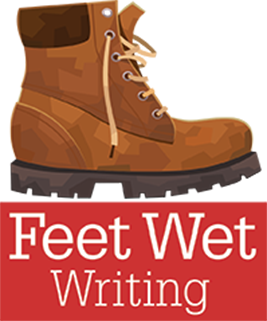
Where Can You Find Real-Life Mystery?
Share
As mystery and crime fiction writers, we often weave stories focused on unsettling, unpleasant events. ln real-life, mystery is around every bend in the road, and I am absolutely fascinated by it. Especially when it appears to be nothing and ends up being something.
For a good portion of my life I spent a fair amount of time teaching school kids about our natural resources. I am a firm believer that you can’t teach very much about the outdoors indoors, so every chance I got we would head outside. Their teachers and I would pick a spot that had some diverse communities like a woodland, prairie, and always a wetland—usually one that had a shallow emergent component, basically shallow open water.
The kids would sit quietly along the shore, and if they were writing age, they’d get out their notebooks—more often referred to as a field journal in endeavors like this. I’d give them a task to identify as many different creatures as they could that called this wetland home. Using field guides, they commonly identified Canada Geese, ducks, turtles, frogs, and a variety of birds like herons, egrets, and kingfishers. We’d discuss the community in which they lived and the fact that these species were wetland dependent, meaning without wetlands they would cease to exist. These creatures all pretty much inhabited the same world as we humans did, out in the sunshine for anyone to see. But what about the part of the wetland we couldn’t see? What was in the netherworld below the surface of the water? The kids would guess at all sorts of things, but the only real way to find out was to look.
Scooping up Mystery

I would break them into small groups give them scoop nets and scientific collecting containers—most often labeled Schoep’s or Cedar Crest, local ice cream favorites. The kids would accompany me to the shore edge with each group giving the others plenty of space. Wading out into the water, I’d give them a demonstration of how to scoop with their nets. Put the net in the water and slowly but not too slowly draw it towards you and lift it out of the water. They were captivated after the first scoop—what was hidden from their view was now visible in their world. Leeches, minnows and bugs of every kind. Water scorpions, predacious diving beetles and tadpoles took center stage as the children picked through their nets and deposited findings in the buckets.
The excitement of discovery was in the air each scoop brought more enthusiasm, laughter and the occasional scream. Teachers were having as much fun as the students rushing form group to group responding to “Hey look what we got!” When the scooping was done and the students were sufficiently wet and muddy, each team would show what they had found. Then we would return our captives to their watery home. In a blink they were beneath the surface and again out of our view, where they would remain a mystery until someone else looked.
If you are looking for a real-life mystery, head outside, and if you can take a kid with you. What at first appears to be nothing may turn out to be a great mystery and provide inspiration for the next story.
